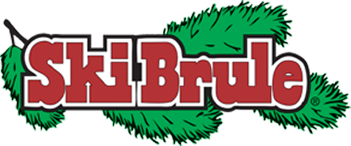It’s summer. The temperature’s climbing into the 90’s and Cinco de Mayo and closing day at the resort have come and gone. Your skis and snowboards are sitting where you left them the last time you came down from the mountain, still covered with a thin film of mud, pine needles and dried IPA. Now you face the problem of what to do with them over the summer, while you stay in shape (hopefully) hiking, mountain biking and wake boarding.
You say you usually just leave ‘em in the garage and deal with it when the snow starts to fall? Come on, your boards deserve better than that – is that how you treat a good friend? Take some time to clean them up and prep them for the summer, and they’ll be nearly ready to go come fall.
Here’s how to take better care of your gear so it knows you care.
Step 1, Get them clean – Usually this is best accomplished with a garden hose and a towel – dirt, salt, road grime . . . all needs to go. Spray everything down thoroughly, trying not to force water into the bindings if possible. Avoid using degreasers or detergent, as they could affect the binding lubricant. If there’s a nasty buildup of grease or spring pollen on the bases, usually manifested as a thick gloppy gray or black mess stuck to the base, try a cloth dipped in a small amount of citrus solvent.
Step 2, Check the edges – Sharpen the edges or at least remove the most obvious burrs to reduce the chances of rust and leave less work for yourself come next season. Actually, summer is the ideal time to have your shop do a base grind and fix any base or edge damage incurred during the winter. Shop techs have nothing but time in June. If you wait until five days before your annual December trip to the resort, we pretty much guarantee this won’t be the case.
Step 3, Wax the bases – You’ll want to hot wax the bases with an all-temperature or a softer warm-weather wax to protect them from oxidation, but don’t scrape it off. Be generous with the wax and be sure to cover the edges, which will help keep rust away.
Step 4, Store them – Find a decent place to store them, preferably not in the garage, or in a tent or leaning against the side of the barn. A cool, dry place inside your house and out of the sun is best. A neutral position with no pressure on either camber or rocker is preferable (in other words, not hanging by the tips between two dowels or with the camber compressed by straps or ski brakes).
Step 5, For the really anal – Some people back off the tension on their ski binding springs, so they don’t stay compressed all summer. Loosen them to the lower end of the available DIN scale, but not completely. You can also move alpine binding heelpieces to the “ski” position (heel cylinders up for Rossignol/Look/Marker bindings, latch up and heel interface down for Salomon) and tech toepieces to the “closed” position (toe levers up) to lessen the load on the springs. Some snowboarders remove their bindings or loosen the screws in summer to reduce stress on inserts and to prevent dimpling of the base. This is your choice – there’s no real downside to doing this, and it only takes a few minutes. Oh, and don’t forget to reset your DIN’s to the correct setting on each toe and heelpiece before you use them again. It’s not a bad idea to write the numbers on a piece of tape and stick it on your skis.
Step 6, Don’t forget your boots – Pull the liners out and make sure everything is completely dry, then buckle ski boots loosely so they hold their shape. Check the heels and toes of your boots for wear while you’re at it, and replace if necessary. This is a great time to inspect your snowboard boot laces and replace them if they’re worn, too.
Step 7, Wait for the snow to fall – When the lifts start to spin, scrape the wax off, brush and go if you’ve used an all temp wax. If you’ve used a warm weather wax, scrape it off and rewax for the current temperature.
~ Thinking Snow
Jess

Recent Comments